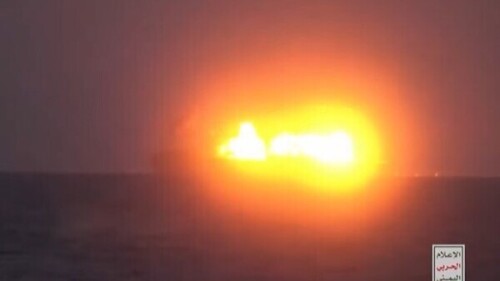Consider the paradox: Almost every government agrees that Iraqi dictator Saddam Hussein is an appalling monster and shudders at the prospect of his acquiring nuclear weapons. Yet those same governments are also furiously signaling their disapproval of an American-led military effort to depose him.
That would be “risky adventurism,” declares Germany’s Chancellor Gerhard Schroeder; Saddam poses no immediate threat, and Washington lacks a justification to attack him. Most U.S. allies worldwide agree.
But they are plain wrong. Saddam is an immediate menace, and the U.S. government has cause to preempt him. Here’s why:
* Record. Saddam has a history of unrelenting aggression. He invaded Iran in 1980. He conquered Kuwait in 1990. He assaulted Saudi Arabia and Israel with missiles in 1991. He’s shot at U.S. and British aircraft in the “no-fly zone” since 1992. He attacked the Kurdish regional enclave in 1996.
He also has many links to terrorism. Iraq harbors Abdul Rahman Yasin, one of the gang that bombed the World Trade Center in 1993. It also hosted the notorious Palestinian terrorist Abu Nidal, just found dead in Baghdad. He encourages Hamas suicide bombers by paying $10,000 to their families. His terrorists tried to assassinate former President George H.W. Bush and the emir of Kuwait. An Iraqi diplomat met with al Qaeda’s Mohammad Atta before the Sept. 11 suicide mission.
* Casus belli. Saddam has a history of violating international law and developing illegal weapons.
In February 1991, he signed an agreement accepting all U.N. Security Council resolutions passed after his invasion of Kuwait seven months earlier. He recognized Resolution 687, which demands Iraq’s weapons of mass destruction (WMD) be “destroyed, removed or rendered harmless,” and requires inspectors be allowed into Iraq.
But Saddam then played “cat and mouse” with the inspectors by withholding information, dissimulating and hiding materiel. “Iraq released detailed records of how many ballpoint pens it ordered in the late 1980s,” noted a U.S. government report in 1998, but left out vital information about its “missile warheads capable of delivering biological and chemical agents.”
Nonetheless, over seven years, inspectors did destroy at least 27,000 chemical bombs, artillery shells and rockets, 500 tons of mustard and nerve agents and thousands of tons of precursor chemicals. They dissembled much of Iraq’s nuclear program, which was further along than previously thought - and which had continued in violation of Resolution 687.
Then, in August 1998, Saddam accurately read the Clinton administration’s mood and closed the door to further inspections, correctly figuring he would not have to pay a price for this unilateral abrogation of his promises.
* Dangers. Saddam has unquestionably used the past four years to build WMD. Adnan Saeed al-Haideri, an Iraqi civil engineer and a recent defector, informed the Defense Intelligence Agency that Saddam is building biological and chemical weapons in eight locations throughout Iraq. Khidhir Hamza, former chief nuclear scientist for Saddam’s nuclear weapons development program and another Iraqi defector, estimates Iraq now has “12 tons of uranium and 1.3 tons of low-enriched uranium” and asserts that Saddam will have “three to five nuclear weapons by 2005.”
Richard Butler, former chief U.N. weapons inspector, says it is “foolish in the extreme” to believe that Saddam is not hard at work on long-range missiles, and nuclear, chemical and biological weaponry. If Saddam does get his hands on nuclear weapons, he will exploit them fully. He is the only ruler in power already to have used WMD - having deployed poison gases against both Iranians and his own Kurdish population.
President Bush is therefore right to state that the United States must “confront the worst threats before they emerge.” With no other means to dismantle Saddam’s arsenal and protect against future aggression, this leaves a military campaign as the only option - and the sooner it begins, the better for us all.







